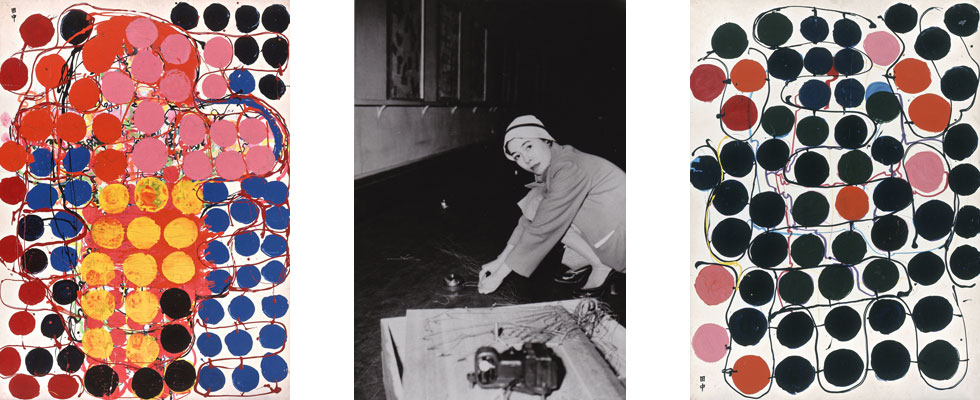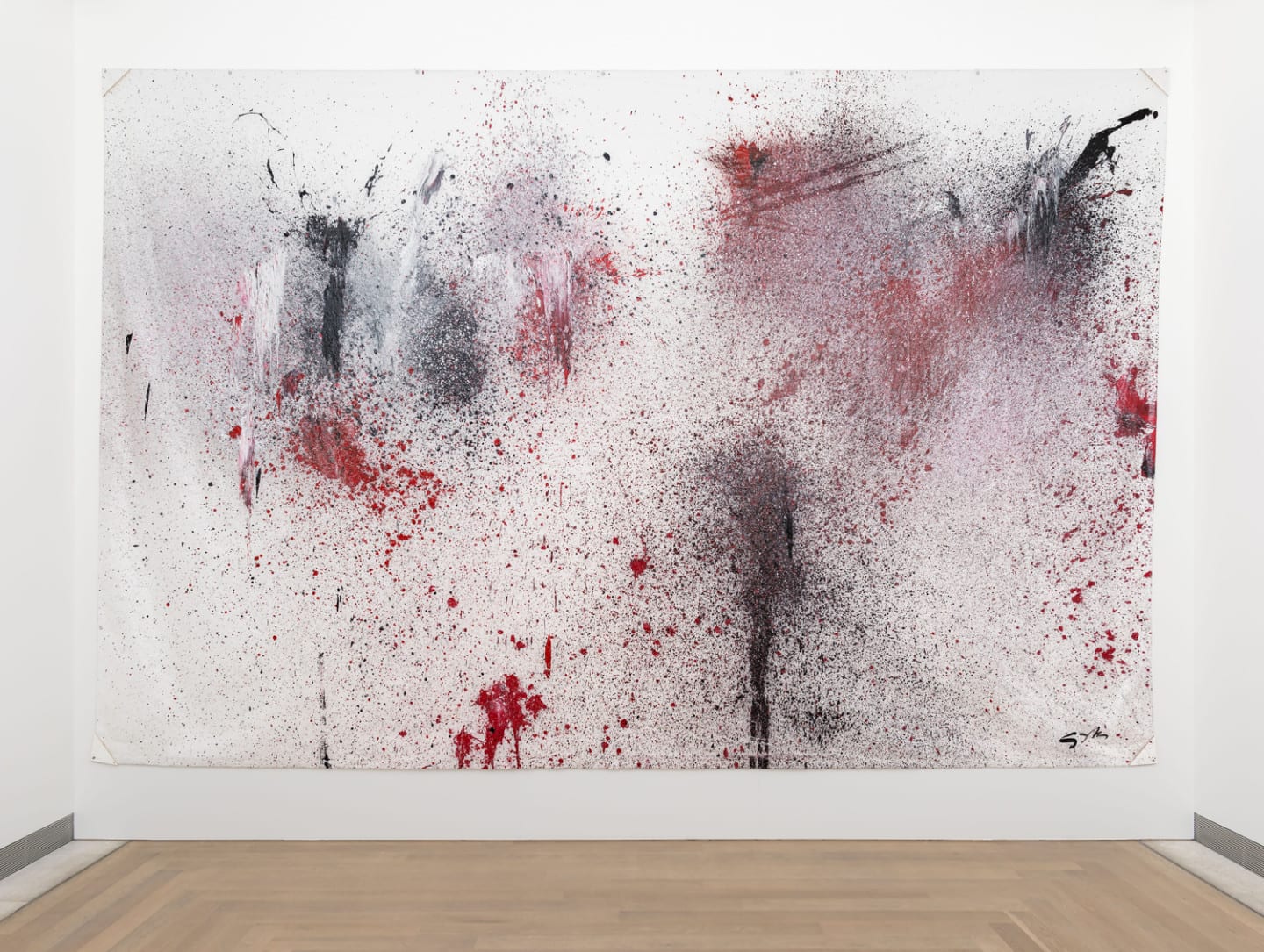
Atsuko Tanaka, Untitled (1), 1956, Untitled (3), 1956, Untitled (6), 1956, Untitled (9), 1956 © Kanayama Akira and Tanaka Atsuko Association. Courtesy of Nakanoshima Museum of Art, Osaka.
On some of the works in the exhibition Atsuko Tanaka
Denkifuku, 1956/1999
Electric Dress
”Electric Dress” is a sculpture that can also be worn as a dress. The first time Tanaka wore it on stage, only her face and hands were visible beneath it. The colored light bulbs pulsated over her entire body like electrified blood streams. In ”Electric Dress”, Tanaka has conflated her impressions of Osaka’s many neon lights with the traditional kimono into a modern icon. She has literally incorporated the materials and aesthetics of the metropolis.
With its hundreds of electrical circuits, the dress was potentially very dangerous and Tanaka described how when the electricity was switched on “I had the fleeting thought: Is this how a death-row inmate would feel?” Tanaka later reused parts of the dress to create new works. This version was recreated for an exhibition at Jeu de Paume, Paris, in the 1990s.

Work (Bell), 1955/2001
”Work (Bell)” consists of 20 electric alarm bells connected by a long chord. When a button is pressed they start ringing one after the other. Instead of working in color and form, Tanaka uses time, space, and sound to draw an invisible line using the movement of sound through the exhibition space. The Gutai artist Shozo Shimamoto (1928–2013) aptly described ”Work (Bell)” as “perhaps the first ever invisible work in the history of art.”
By letting the artwork first emerge when it is activated, Tanaka challenges the traditionally passive relationship between viewer and artwork. In an interview in 1955 Tanaka stated, “In my work I would like to destroy safe beauty.” The intense sound cuts through the reverential silence that often prevails at art museums. But, like the artist John Cage’s (1912–1992) compositions of found sounds and silence, ”Work (Bell)” is also a way of listening to and capturing the outside world.

Paintings in the exhibition
In the course of fifty years, Atsuko Tanaka created a large group of paintings in which bright colors, organic forms, and circles are interlinked by networks of lines. Tanaka worked on the floor, moving her paintbrush to the center of the painting and working outwards from there. She often used fast-drying vinyl paint, which gives the works a particular gloss and depth. They lack straight lines and resemble calligraphy or a form of automatic writing.
The network paintings are also related to Tanaka’s early work such as ”Electric Dress” – with its electric cables and circuits. The feeling of motion is palpable, and like the movement of sound in ”Work (Bell)”, the many lines and circles seem to continue outwards beyond the frame.
Round on Sand, 1968
In ”Round on Sand”, Tanaka draws concentric circles in the sand while the waves wash in. The film was produced by Hiroshi Fukuzawa and shot in the autumn of 1968 on Awaji Island in the Hyogo Prefecture. The drawings on the beach are large in scale and seemingly improvised. When the camera pans out, the traces in the sand resemble a strange map without bearing.
The artwork is both temporary and site-specific in nature and could be seen as a continuation of Tanaka’s preoccupation with incorporating time and space into her painting. In ”Round on Sand” Tanaka has taken a step away from the circuit drawings that inspired her previously. Here she explores a more abstract affinity where everything in the universe seems to be connected.

Calendar, ca 1954
During a longer hospitalization at the end of 1953, Tanaka started working on a series where she counted down the days until she would be discharged. By using the calendar as a schematic image, Tanaka showed how arbitrarily we give shape to time. She started experimenting with layering the calendar’s syntax over collages in which texts, colors, and forms distorted the otherwise so defined structure.
In the series, Tanaka explored how much she could warp the formal properties before the image lost its meaning and readability. At a time when the overhanging threat of nuclear war weighed heavily on Japanese culture, the idea of a countdown also had a ghostly other meaning.

Shozo Shimamoto
Cannon Shooting Painting, 2011
After the Second World War, artists worldwide started attacking the fundamental principles of painting. At the intersection between painting and performance, many artists attached as much importance to the creative act as to the painting it engendered. In 1956, Shozo Shimamoto (1928–2013) started experimenting with shooting paint-filled plastic bags at vinyl canvases.
For the exhibition ”Explosion! Painting as Action” at Moderna Museet, the eighty-three-year-old Shimamoto performed one of his large-scale shooting paintings. ”Cannon Shooting Painting” was later donated to the museum. Despite the contrast between the seemingly violent treatment of the canvas and the resemblance the finished painting has to a quiet starry sky, Shimamoto stated that his intention was to show the beauty in everything that surrounds us.


